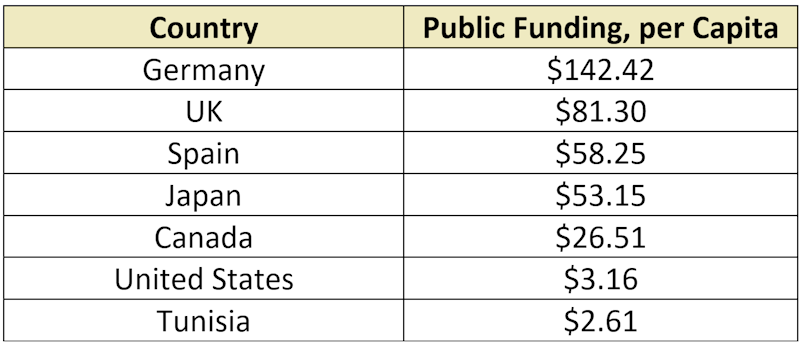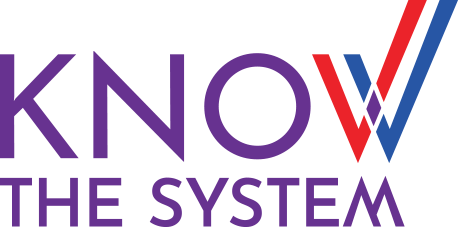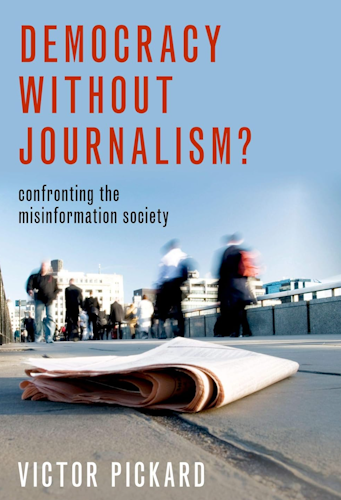A few reactions to Democracy Without Journalism?
(Author: Victor Pickard)
…The United States has essentially conducted a hundred and fifty-year experiment in commercial journalism by treating news as both a commodity and a public service. With the latter function driven into the ground by the market, this experiment has largely failed.
Assaulted by a daily torrent of news and commentary, most of the general public is only dimly aware of the downhill slide of journalism in the US. But it’s disastrous: in the past two decades, the total number of journalists has shrunk dramatically, and many local newspapers have disappeared. The main cause is the shift of advertising dollars (traditionally the main source of revenue for news organizations) to the internet: Google, Meta, and others.
What is more widely recognized is the fragmentation of audiences into partisan media silos, and the general degradation of public discourse. The financial pressures on news organizations have led to a desperate competition for eyeballs. Social media promotes the more extreme voices. There have always been deep structural problems within the idea of a for-profit Fourth Estate, but recent decades have seen their full flowering.
Victor Pickard carries the torch for his mentor, the renowned scholar and (self-described) socialist Robert McChesney, in advocating for a dramatic increase in support for public media in the US. I’ve reached similar conclusions via my own idiosyncratic path. The logic is astoundingly straightforward and compelling, and yet the prospects for a bold rescue from the status quo seem quite dim.
I read Pickard’s 2019 book, “Democracy Without Journalism?” as well as some of his more recent papers (e.g. this and this.) One important problem that he lays bare is the hegemony of a libertarian assumption in policy: that the market should be trusted and left alone to produce the best outcome. In a democracy, however, education of citizens about civic affairs is a public good, and should not be regarded as just another commodity.
…Fealty to the market ensures that society will not attempt a serious public policy response to a major social problem. [By the logic of a “market ontology”], if publics (or rather, advertisers, investors, and media owners) do not support certain kinds of journalism, we must let them wither. This position’s inherent absurdity is cast into stark relief if we designed our public education according to a similar commercial logic. If students elect not to pay for civics class, then it is discontinued. …If scholars’ journal articles do not receive enough clicks or likes, they must abandon their research agendas.
Pickard provides selected bits of history where media reforms were proposed but then ignored or squashed. He summarizes:
Over the decades, liberal policymakers and intellectuals have consistently applied classical democratic theories—the stuff of “public spheres” and “marketplaces of ideas”—to a commercial media system that systematically underserves these ideals. In theorizing this failure, liberal thinkers sometimes arrive at a structural critique of a market-driven media system. However, once they find themselves arriving at the kinds of social democratic conclusions that would necessitate government intervention in media markets, they tend to retreat to extolling the comfortable sanctities of the market and its propensity for innovation and efficiency. Any concession that government may need to intervene in the face of overt market failure must be accompanied with sufficient caveats and qualifiers that dissuade accusations of statism, authoritarianism, and anti-capitalism. These are the nervous liberals—liberals made nervous by their own conclusions.
My forthcoming book drills into the concept of the marketplace of ideas, which has been the backbone of First Amendment jurisprudence since the 1920s. Suffice it to say, the myth does not make sense in the current era of “cheap speech.” Yet, a free speech fetishism continues to dominate public discourse.
Support for Public Media
Pickard describes the genesis of public television in the 1960s. It was successful in many ways, but the critical failure of the Public Broadcasting Act was in establishing that funding would depend on annual congressional appropriations, which rendered it vulnerable to constant budget fights and political attacks.
In a 2021 article written by Pickard and his colleague Timothy Neff, per-capita spending on public media was compared across 33 countries. Here are a few of the data points:

The current federal contribution to public media in the US is approximately $0.5 billion per year (which is less, incidentally, than the total aggregate contributions from state and local governments.) In Democracy Without Journalism?, Pickard suggested increasing annual federal support to $30 billion, which would still be beneath the per-capita levels of a number of developed nations.
Just for perspective: total US federal discretionary spending—which does not include the much larger mandatory entitlements spending—is $1.6 trillion per year. Thus, current spending on public media (specifically, for the Corporation for Public Broadcasting) constitutes about 0.031% of federal discretionary spending, that is, less than one-thousandth of it. Increasing public spending to $30 billion would bump that percentage up to 1.9% of discretionary spending. Military spending, by contrast, constitutes 46% of discretionary spending.
(Another possibly-relevant point of comparison is the amount spent privately on political campaigns, which, arguably, aims to inform citizens. For the 2020 campaign, political spending totaled $14.4 billion, and for the 2022 midterm elections, approximately $9 billion.)
There is headroom for greater spending.
Constitutional Considerations
Pickard speculates that there is frequently a conflation of the “marketplace of ideas” with the commercial marketplace. This does seem to dovetail with trends in Supreme Court jurisprudence during the past thirty years which have increasingly granted anti-regulatory rights to corporations on the basis of the First Amendment. Legal scholar Amy Kapczynski characterizes the trend as “neoliberalism in law”: a premise that, the less we regulate any market, the better it can magically do its job of creating optimal outcomes.
In my own thinking about how news media and social media could potentially be regulated, my pessimism has grown about the way this kind of jurisprudence will likely stand in the way of reform. So I was intrigued when Pickard discussed a 1945 Supreme Court case, Associated Press v. United States, in which the AP’s right to deny service access to a liberal newspaper was rejected. In a written opinion by Justice Hugo Black, he delineated a progressive role for government, and asserted that “Freedom of the press from governmental interference under the First Amendment does not sanction repression of that freedom by private interests.” Pickard suggests that the decision affirmed three key points:
First, when democratic imperatives were at stake, media institutions were fair game for government intervention and could not hide behind the First Amendment. Second, the press’s commercial concerns were not as important as its democratic obligations to the public. And third, the press was invested with special public-service attributes; it was not a mere commodity and therefore should not be treated as one under the law. Ultimately, the public’s positive rights to a diverse media system are more precious than publishers’ negative individual rights shielding them from government regulation.
I don’t know how much this interpretation holds sway in today’s legal establishment. But I do believe that, given the crisis situation in today’s public discourse, and the growing number of First Amendment cases finding their way into the Supreme Court docket (especially in connection with social media), the courts sooner or later will be compelled to test the media philosophy espoused by Black.
My own framing of this constitutional problem is that, while government must never be allowed to prohibit (or, compel) speech, and while regulation of private companies ought never be instituted without a compelling public interest, we nevertheless must press Congress to take steps to shape the speech environment in ways that support sober, rational, democratic discourse.
More about Effects
So I am completely on board with Pickard’s proposal. But there are two important questions that I think Pickard does not address fully. The first is how or whether adding more public media actually will change public discourse. The second is about tactics: how can the necessary legislation get passed? I’ll address each.
We can imagine an argument that our media is “good enough” as is. We’ve got access to all the information we could possibly want: online, in books, and so on. But the real issue is that few people care enough to look.
A book that made a strong impression on me is Attention Deficit Democracy, which argued that activists and scholars often do not focus enough on the “demand” side of politics: taking very seriously what citizens do or do not want to do. Applying this to the current context, will adding lots of high-quality news to the system change what citizens are paying attention to and talking about?
Certainly it will be a boon to the citizens who are tuned into the details of policy issues. However, unless partisan media and social media disappear, I am unsure how much “mainstream” news and commentary will diverge from the trainwreck we have today. Propagandists have found new venues for attention; politicians care most about what mass audiences think; and (again) profit motives make media outlets desperate for eyeballs.
This, it seems to me, is a problem that we need to confront. We have known at least since the publication of Walter Lippmann’s Public Opinion that people are susceptible to drama and “stereotypical” thinking. But the advent of media fragmentation and social media brings an unprecedented urgency to addressing the issue, which now is never going to go away. Part of the solution may be a more determined effort at teaching critical thinking and media literacy, both to students and to adult citizens. Another part may involve finding ways to systematically “get in the face” of the polarizing, manipulative rhetoric and propaganda pushed onto media platforms.
Similar questions may be raised about the likely effects on public discourse of funding much more local journalism, which, rightly, is a high priority for Pickard. If it is written and produced, will people look?
Again, I do not know, but I would have liked to hear more arguments why it will get attention when the more exciting national fare is still available. We must acknowledge that people are less geographically rooted than in past generations; and that they were decreasingly likely to be involved in local communities even before the collapse of local journalism; and that everyone is spending more and more of their lives online. Certainly, local crime and local disaster will always attract interest, but will local, socially-progressive journalism? In any event, I’m skeptical that it will slow down the national propaganda circus.
But funding local journalism is, most definitely, worth trying. Pickard cites research that links local journalism with higher rates of voting and other valuable civic behaviors. And he points out that
Just having reporters on the scene can change the way that authorities operate, making them more accountable, especially in situations involving marginalized populations who often lack institutional support and political representation. This “observer effect” helps journalists advocate for vulnerable segments of the public.
In any event, it may be that pushing support for local journalism could be the easiest bipartisan “sell” to politicians.
Getting Action
The second question is about how Pickard’s policy proposal could possibly be turned into reality. I suspect there are few experts who would believe that such legislation could ever get passed in our lifetimes. If the proposal gained significant prominence, it would be very easy for Republicans to energize public opposition to the idea based on specious arguments about the Constitution, free speech, and liberal bias, while deep-pocketed media corporations worked tirelessly behind the scenes lobbying politicians in both parties. So, is the proposal doomed to be a mere intellectual exercise?
I do not think so. But a strategy is required. Public support needs somehow to be generated, again respecting the demand-side imperative (mentioned previously). How might we get citizens to care about the issue, to want something to be done?
I think first it’s necessary to be realistic about whom can be interested. Discussion of effects of media on democracy is very abstract, and, for the majority of Americans, eyes will glaze over when they are lectured about this. Only a minority of literate, (perhaps mainly) college-educated Americans make up the potential segment.
Still, this could be sufficient: most serious journalism is especially attentive to this segment, and if this segment becomes interested in change, it could have cascading effects on the rest of the citizenry. If, further, this segment learns how to reject specious arguments against public media expansion, antagonistic politicians’ wiggle room diminishes.
Even so, what could energize such a segment? I would argue that rational arguments are insufficient. Emotion is required, and the most motivating type is anger.
And, on the merits, there ought to be anger about this issue. But ways must be devised to awaken it: by educating this segment, by spotlighting and analyzing instances of the current ugliness, by providing clear visualizations of a saner world, by putting the current media environment into historical context, by connecting media to our debilitating legislative paralysis… and, not least, by showing them how propagandists devise talking points to exploit the cognitive vulnerabilities of humans.
That, I’d argue, is what is required to generate the popular will for Pickard’s proposal to gain traction. It would have to be done in a way that exploits existing interests, and does not require extraordinary intellectual effort, and that touches large numbers of citizens in the target segment.


